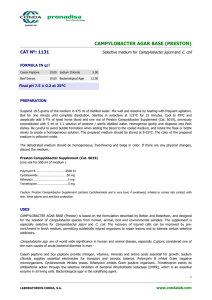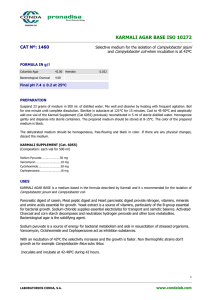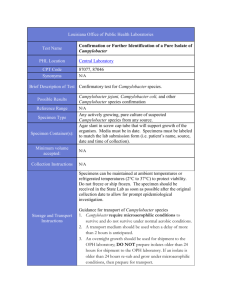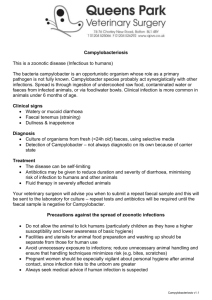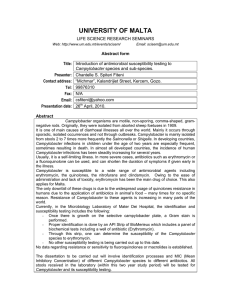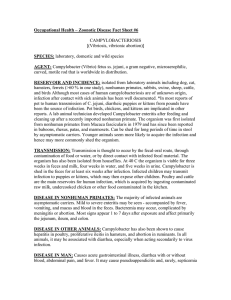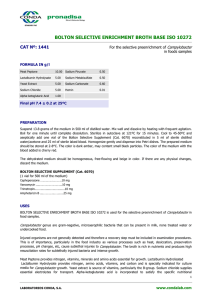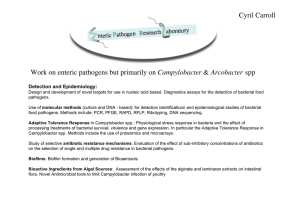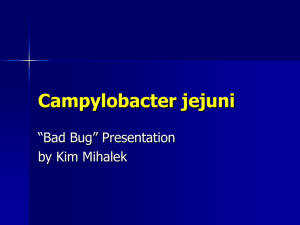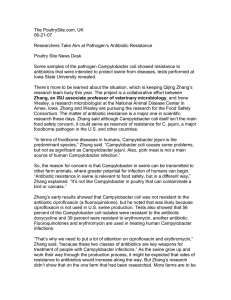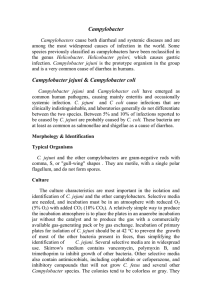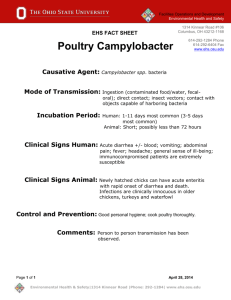CAMPYLOBACTER AGAR BASE BLOOD FREE (CCDA) ISO 10272 CAT Nº: 1129
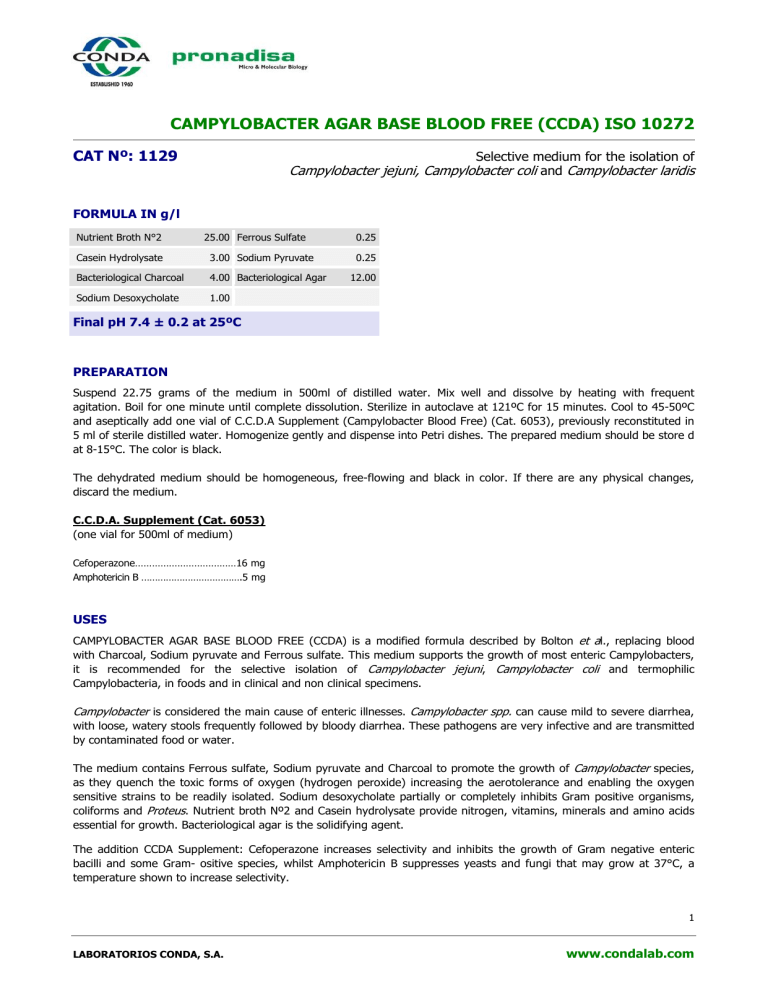
CAMPYLOBACTER AGAR BASE BLOOD FREE (CCDA) ISO 10272
CAT Nº: 1129
FORMULA IN g/l
Selective medium for the isolation of
Campylobacter jejuni, Campylobacter coli and Campylobacter laridis
Nutrient Broth N°2
Casein Hydrolysate
Bacteriological Charcoal
Sodium Desoxycholate
25.00 Ferrous Sulfate
3.00 Sodium Pyruvate
4.00 Bacteriological Agar
1.00
0.25
0.25
12.00
Final pH 7.4 ± 0.2 at 25ºC
PREPARATION
Suspend 22.75 grams of the medium in 500ml of distilled water. Mix well and dissolve by heating with frequent agitation. Boil for one minute until complete dissolution. Sterilize in autoclave at 121ºC for 15 minutes. Cool to 45-50ºC and aseptically add one vial of C.C.D.A Supplement (Campylobacter Blood Free) (Cat. 6053), previously reconstituted in
5 ml of sterile distilled water. Homogenize gently and dispense into Petri dishes. The prepared medium should be store d at 8-15°C. The color is black.
The dehydrated medium should be homogeneous, free-flowing and black in color. If there are any physical changes, discard the medium.
C.C.D.A. Supplement (Cat. 6053)
(one vial for 500ml of medium)
Cefoperazone………………………………16 mg
Amphotericin B ……………………………….5 mg
USES
CAMPYLOBACTER AGAR BASE BLOOD FREE (CCDA) is a modified formula described by Bolton et a l., replacing blood with Charcoal, Sodium pyruvate and Ferrous sulfate. This medium supports the growth of most enteric Campylobacters, it is recommended for the selective isolation of Campylobacter jejuni , Campylobacter coli and termophilic
Campylobacteria, in foods and in clinical and non clinical specimens.
Campylobacter is considered the main cause of enteric illnesses. Campylobacter spp. can cause mild to severe diarrhea, with loose, watery stools frequently followed by bloody diarrhea. These pathogens are very infective and are transmitted by contaminated food or water.
The medium contains Ferrous sulfate, Sodium pyruvate and Charcoal to promote the growth of Campylobacter species, as they quench the toxic forms of oxygen (hydrogen peroxide) increasing the aerotolerance and enabling the oxygen sensitive strains to be readily isolated. Sodium desoxycholate partially or completely inhibits Gram positive organisms, coliforms and Proteus . Nutrient broth Nº2 and Casein hydrolysate provide nitrogen, vitamins, minerals and amino acids essential for growth. Bacteriological agar is the solidifying agent.
The addition CCDA Supplement: Cefoperazone increases selectivity and inhibits the growth of Gram negative enteric bacilli and some Gram- ositive species, whilst Amphotericin B suppresses yeasts and fungi that may grow at 37°C, a temperature shown to increase selectivity.
LABORATORIOS CONDA, S.A.
1 www.condalab.com
Inoculate and incubate at 42°C for 24 - 48 hours. C. jejuni produces gray, moist, flat, spreading colonies. C. coli colonies are creamy-gray, moist, slightly raised and tend to be discrete.
MICROBIOLOGICAL TEST
The following results were obtained in the performance of the medium, with selective supplements added, from type cultures after incubation at a temperature of 42°C and observed after 24 - 48 hours.
Growth Microorganisms
Campylobacter jejuni ATCC 29428
Campylobacter coli ATCC 33559
Good
Good
Inhibited Escherichia coli ATCC 25922
BIBLIOGRAPHY
Bolton F.J. Hutchinson D.N. y Cioste D. (1984) clin. Microbiol. 19,169-171 Bolton E.J., Roberstson L. (1982) J. Clin Parth 35, 462-67
STORAGE
8ºC
Once opened keep powdered medium closed to avoid hydration.
2ºC
LABORATORIOS CONDA, S.A.
2 www.condalab.com
